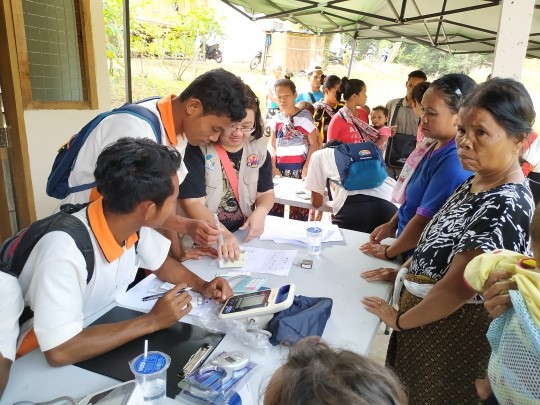When Federation of Private Medical Practitioners’ Association Malaysia (FPMPAM) president Dr Steven Chow invites CodeBlue to cover the association’s opening of Malaysia’s first Orang Asli Medical Post in Pos Lenjang, Kuala Lipis, I don’t hesitate to join them and stay the night in the Semai villages.
There is, after all, no better way to understand Orang Asli issues than to stay with them, even if just for one night.
I only have a vague memory of the last time I stayed in the jungle – when I was camping out at Outward Bound School (OBS) at the age of 12.
So, I pack a brand-new sleeping bag, mattress, and pillow, since Dr Chow tells me that we’ll be sleeping in bamboo huts with open doors and windows.
The trip with a few doctors from Kuala Lumpur to Pahang on Saturday is uneventful, but entering the logging route from Jalan Ringlet-Sungai Koyan to Pos Lenjang through the jungle is the start of a nauseating journey in our Ford Ranger, filled with frequent bumps as we try to avoid huge potholes. I time our journey on my phone’s stopwatch. It takes 50 minutes to reach Kampung Dayok on a sunny afternoon. I’m told that on bad rainy days, it can take three hours.
The Orang Asli Medical Post in Kampung Dayok, which will be run by Semai youths from the community trained in first responder treatment, is to open its first clinic on Sunday, officiated by Deputy Health Minister Dr Lee Boon Chye.
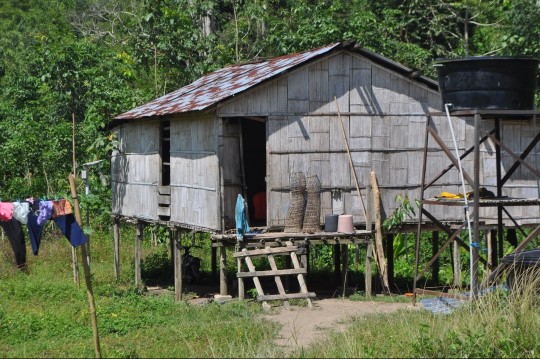
Four doctors and I gather our things from the car and cross a newish-looking bridge across Sungai Jelai that can only fit motorcyclists and pedestrians. When we get to the bamboo hut that’s nearest to the river where we’ll apparently bathe in, we find that the team that arrived earlier on Friday has already occupied it. So, we trek on to another hut a few minutes away up a slope.
Here in Kampung Dayok, there is no electricity, piped water, or a phone line. Only Pos Lenjang, where the Health Ministry’s Klinik Desa Pos Lenjang and a primary school are located, has network connectivity. But the air is fresh with the smell of trees, unlike the stale smoggy air of leftover haze in the city.
After dumping our stuff, St John Ambulance Malaysia Pahang state commander Dr Hew Kin Sun runs a basic first aid class for the Orang Asli Medical Post volunteers, most of whom are in their late teens or 20s. Twenty-two Semai youths have already completed the Orang Asli Medical Training course and basic first aid training.
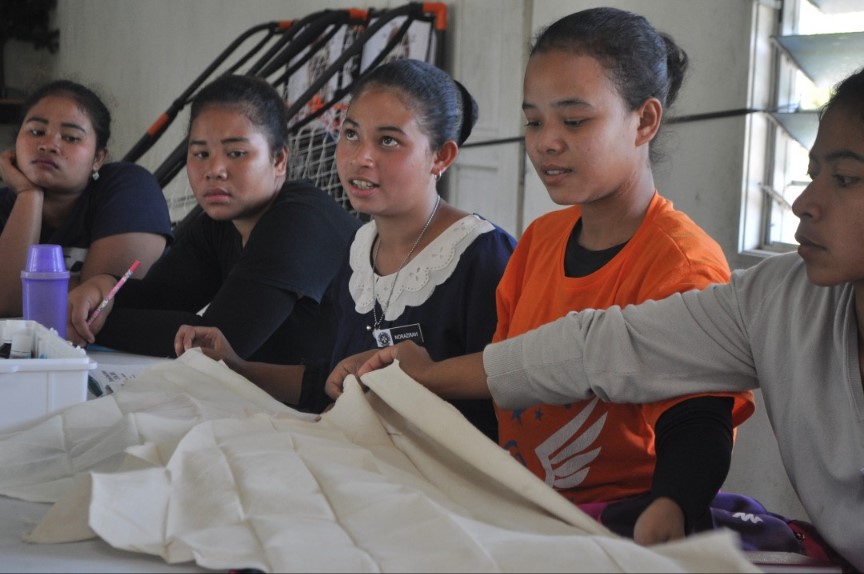
The young women and men sit separately on the right and left sides of the class that is held in a small bare church. Most of the Semai people in Pos Lenjang are Christians and Bahai, with a few Muslims.
Dr Hew gets a few trainees to practice CPR on a flat-chested blonde, male dummy. Women are really underrepresented in medicine. The trainer is pleased with one of the female students, but not so with the others, as he reprimands those asking for help from the class and says no one else will be around in real life. I try chatting with some of the girls – I say “girls” because their diffidence makes them appear like they’re in their early teens, even though they’re all above 18 – but they just smile and giggle nervously. Perhaps it’s a language and cultural barrier, even though we speak Bahasa Malaysia.
Most of Dr Hew’s attention is focused on the female students, while the men don’t seem to be paying much attention. Dr Hew tells me that it can be a little difficult to teach them, especially if they don’t practice at home. He instructs the class to practice CPR on their beds as they don’t have a CPR dummy; one costs RM1,500.
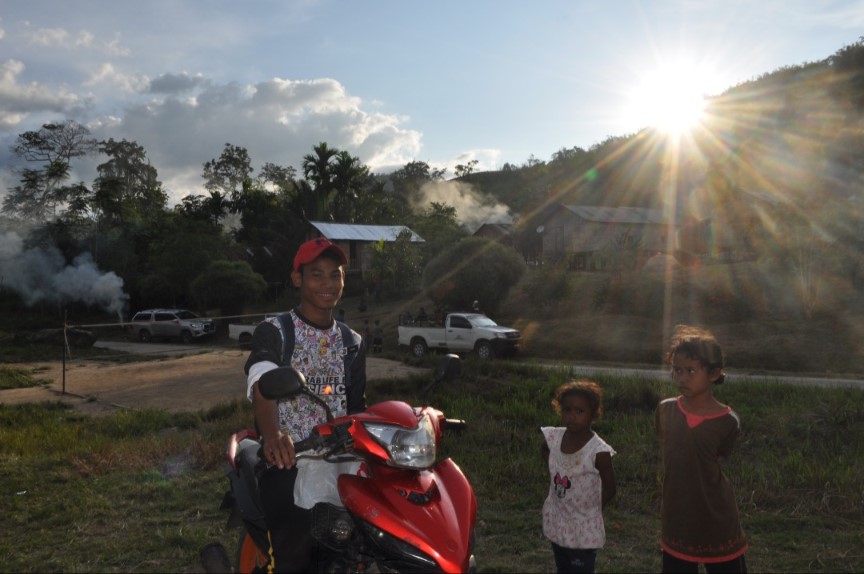
After the class, I interview three trainees and ask them what they’re doing since they’re not in university, even though they’re all 18 and above. One of them, 18-year-old Rosminah Bahlut, tells me: “I want to be a doctor, but if we can’t afford it…”, trailing off without finishing her sentence. All three, who are from Kampung Som, Pos Lenjang, and Kampung Titom, say they work in the fields planting paddy, corn, sugarcane, and pepper. Kampung Titom doesn’t have water or electricity, while the other two villages lack electricity. There are 16 main villages in Pos Lenjang and Pos Titom altogether that house over 3,000 Semai people.
Out of curiosity, I ask the young women what they use to soak up period blood – they use pads and cloth. While zero-waste advocates in the city promote period cups, the Orang Asli have already been sustainable from the get-go. I myself use a period cup and cloth panty liner. The Orang Asli Medical Post volunteers also tell me that a Pakistani man comes around selling daily necessities to each of their villages.
While a few doctors bathe in the nearby river, I decide to have a “proper” shower in a bathroom with a rubber pipe on the floor through which water runs slowly. I try to be as fast as possible because I don’t want to waste the water, since I can’t turn it off myself. The wooden shed’s walls are awfully low, but at least there’s running water. Modesty be damned.
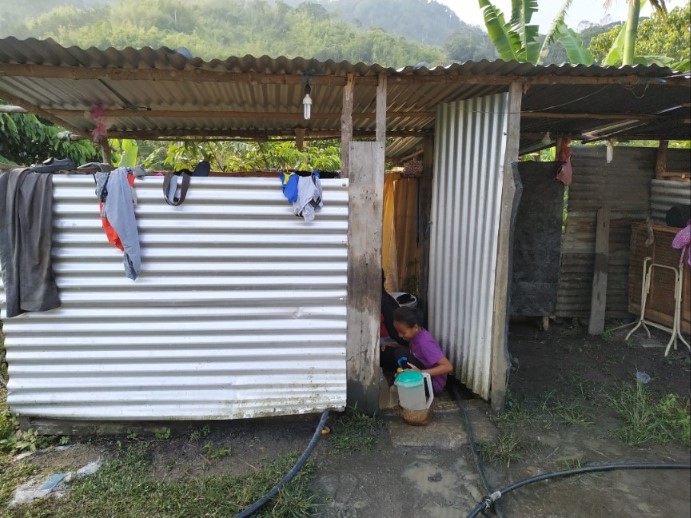
Later, I interview a 62-year-old Semai villager of Bahai faith called Bahsingin Datok. He says he bought his own rubber pipes, with the large ones costing RM200 and the small ones RM130. He spent over RM1,000, not a small sum considering that he only makes RM100 a month occasionally, depending on sales of produce from the paddy, ubi, and bananas he plants. Sometimes he earns nothing at all.
As we walk across the field in the dark to dinner, Bahsingin complains about the distance of the Klinik Desa Pos Lenjang from Kampung Dayok that takes half an hour by motorbike on a rocky, pothole-ridden track. If someone is too ill to ride a bike, others must travel to the government clinic to ask staff to pick the sick up from the village in their 4×4. Half an hour to the clinic, another 30 minutes to Kampung Dayok, and yet another half hour back to the clinic totals an hour and a half in travel time alone. Sometimes, patients wait for another 30 minutes to an hour to be seen because Klinik Desa Pos Lenjang is usually full. And if the basic village clinic can’t treat serious wounds or diseases, patients take an hour and a half or two hours to get to the better equipped Klinik Kesihatan Pos Betau or Hospital Kuala Lipis.
Bahsingin’s son-in-law called Bekraheed, who is our host, is pleased that FPMPAM is training young people from the community to run the Orang Asli Medical Post in Kampung Dayok, as the SPM graduates have nothing to do otherwise.
“In the life of the Orang Asli, we still need alternative services aside from the government.”
Bekraheed, Orang Asli from Pos Lenjang, Kuala Lipis, Pahang
It’s difficult for Orang Asli without motorbikes to get to the Klinik Desa Pos Lenjang, which he claims frequently lacks medicines like antibiotics because the doctor sometimes isn’t there.
I then ask Bekraheed about education. He says his son actually made it to UiTM, but was forced to quit just after one semester last year because the federal Orang Asli Development Department (Jakoa) was slow in paying the public university’s fees. Jakoa had blamed the Finance Ministry for the delay in releasing the money; this was under the previous Barisan Nasional (BN) government. Bekraheed’s son is now studying Form Six at SMK Kuala Lipis.

Some of the physicians I interview after dinner say they have volunteered in several of FPMPAM’s DRSforALL mobile clinics in the interiors, like Dr Shong Chin Min who joined the team’s medical mission last April to the now infamous Kuala Koh in Gua Musang, Kelantan, that saw 15 Orang Asli die mysteriously. The Health Ministry claims measles killed the Bateq people, including unvaccinated adults, though FPMPAM president Dr Chow disputes the official conclusion.
“We want to do good things for the community,” Dr Shong says. “They don’t have city facilities, but yet, they survive.”
When it’s time to go to bed, I toss and turn in my useless mattress on the hard bamboo floor in the hut that I’m sharing with four others. It doesn’t help that someone is snoring loud enough to wake the dead. But at least the weather is what feels like the perfect 23.5 degree Celsius.
D-Day
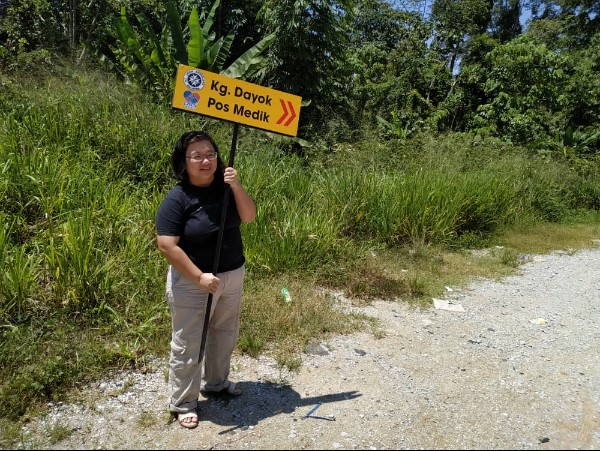
The minute I wake, my roommate Dr Pearl Leong tells me not to use the cloudy water from the pail in the bathroom just behind our hut to avoid contracting a communicable disease. She advises me to wash my face with bottled water that she had brought.
But I can’t bear the thought of not showering in the morning. So I go behind anyway and find a rubber pipe slowly pouring water into a pail just outside the bathroom. I carry a small pail into the bathroom since I’m not strong enough to carry the big one. Seven scoops of dazzlingly cold water and I’m just about done. I would have liked more, but the pipe was already switched off at its source. There are no mirrors in this entire place, I realise, so I can’t check if I parted my hair correctly.
We cross the river to get to the Orang Asli Medical Post. While the physicians prepare to open the clinic at 9am, I invite myself into a stone house, one of the few in Kampung Dayok that has mostly bamboo huts.
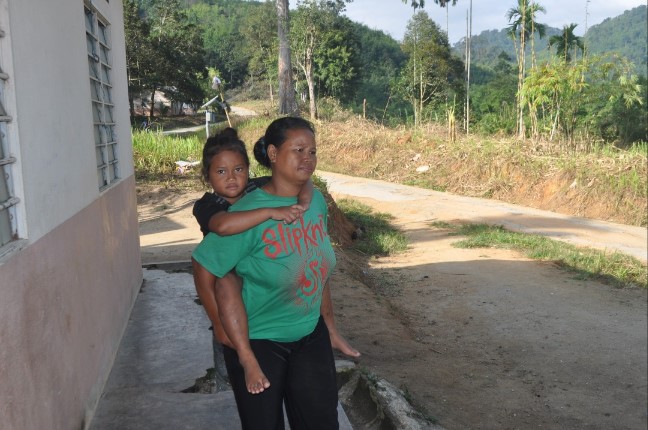
The Semai owner, a Nosrita Mayan who can’t remember her age, has five children, while one died after birth. Her three-bedroom house is bare of furniture. There is a poster about the Bahai faith on the wall, proclaiming that all religions are one, and another poster listing the Orang Asli’s various rights as an indigenous person, Malaysian, and human being. Noryanti, her adorable seven-year-old daughter, allows me to enter a bedroom. There are a couple of mats and dirty pillows in the corner, with scribbles on the wall.
Half of Nosrita’s children were born in that house, received by her mother and sister, while her three other babies were delivered in the hospital. The baby who died immediately after birth was one of those born at home.
“I don’t know when it died,” Nosrita says, almost nonchalantly. “Maybe in the year 2000.”

I visit a bamboo hut next. Another illiterate Semai woman of the Bahai faith called Babuk Keral kindly allows me to enter her personal space. I peek into a bedroom belonging to her 23-year-old son, Hidang Roslan; she, her husband, and 17-year-old daughter sleep in the main area. The kitchen is in another room, where a kettle sits on the fireplace. I almost miss Babuk’s cat, simply called “Kucing”, sleeping on the embers, its skin almost camouflaged with the wood. Babuk’s gas finished last night.
“There isn’t much water here because there are many households. Half don’t get water.”
Babuk Keral, Semai woman from Pos Lenjang, Kuala Lipis, Pahang
The water from Sungai Dayok is little and the rubber pipes are small, she says, unlike those on the other side of the river. Babuk has never gone to the clinic because it’s too far. I suggest that she visit the Orang Asli Medical Post’s clinic just a few metres away.
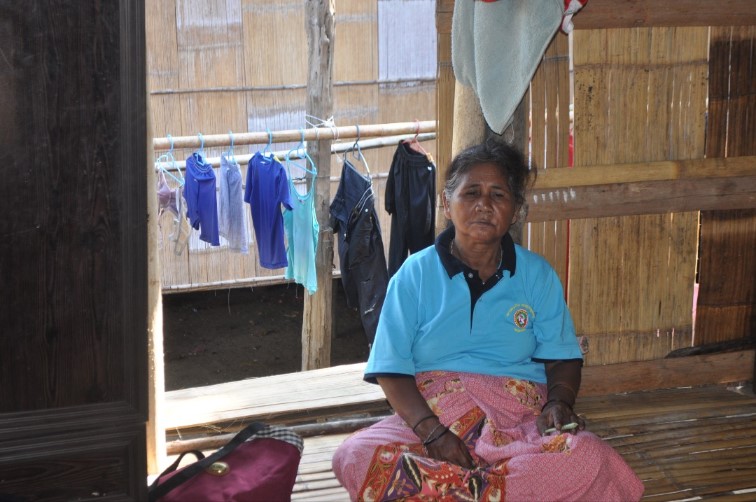
When I finally make my way to the Orang Asli Medical Post, the clinic is full of people, at least 30 adults at any one time and dozens of children. A woman calls out names for people to get their height and weight recorded by the Orang Asli trainees, while other Medical Post volunteers help FPMPAM doctors see patients and dispense medicine, mostly by translating the indigenous Semai language into Bahasa Malaysia.
The drugs are categorised according to code, like F3 for ibuprofen, so that the Orang Asli volunteers can retrieve them correctly, but this means additional time for doctors who have to look for the specific code to jot down in their prescription, as opposed to immediately writing the name of the medicine.

I chat with one of the Orang Asli volunteers, who confesses to me that she feels very scared about the Medical Post because it doesn’t feel like “real study”, but more like “play”.
Then she strengthens her resolve. “But after this, I think I can do it. I have learned a lot.”
I walk around the clinic comprising registration, physicals, five physicians conducting examinations, and a dispensary. An unidentified woman complains of chest pain and of an inability to walk far distances, upon which her doctor advises her to go to the hospital for suspected heart problems. But the volunteer interpreting for her says that the patient doesn’t want to. The doctor gives the woman some pain relief medicine and asks her to promise him that she’ll go to the hospital.
“I can’t promise you that,” she says with a small laugh.
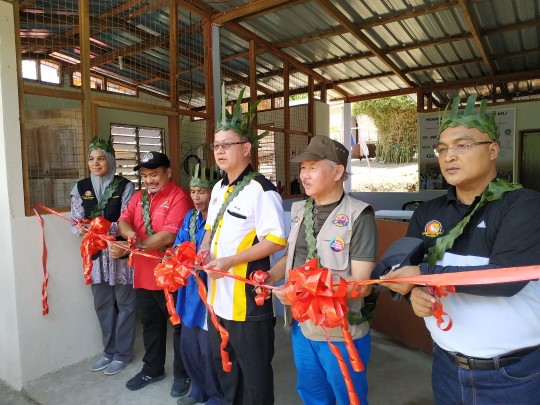
The busy clinic is interrupted when Dr Lee arrives. After talking to some of the doctors and awkwardly posing for photographs with a patient, a young boy, by the press who manipulate their positions, the deputy health minister heads to the church. There, he presents certificates of completion of the Orang Asli Medical Training Course and the St John Basic First Aid to the Orang Asli Medical Post volunteers. While I wait for the official ceremony to conclude, two women in the crowded hall casually lift their shirts to breastfeed their children, embarrassing a young male DRSforALL volunteer who turns away. If only city folk had the same empowering attitude towards breastfeeding in public.
Dr Lee holds a press conference after he graces the ribbon-cutting ceremony for the official opening of Malaysia’s first Orang Asli Medical Post. I do my usual grilling about Orang Asli’s complaints about the inaccessibility of the Pos Lenjang government clinic, and whether the Health Ministry will publish the full report on its inquiry into alleged forced birth control among Perak Orang Asli women. The politician gives his usual answers.
I interview several more Orang Asli after lunch, one of whom says he often must choose between food and medicine (food comes first). They talk about how they labour for 11 hours every day but only earn RM100 or less during some months, dispelling the stereotype of lazy indigenous people.

The clinic was supposed to close at 2pm. But the Orang Asli Medical Post’s opening ceremony at noon suspended things for quite a bit. Things only wrap up at about 4pm. “Feels like going back to KLGH OPD,” quips Dr Chow Chun Khiong, one of the DRSforALL physicians, referring to Hospital Kuala Lumpur’s outpatient department. The Medical Post’s first clinic saw over 200 patients from Kampung Dayok and surrounding villages, mostly children and females.
A 19-year-old DRSforALL volunteer from Kuala Lumpur, Shaun Lau, tells me just how tough Kampung Dayok is, whose conditions are even harder than in Keningau, Sabah, where he once volunteered.
“If you think your life is tough, come here, your life is easier than them,” Shaun says.
His 16-year-old friend chimes in, “We must appreciate what we have.”
Their statements make sense, at first. But on second thought, they don’t.

“I’m not grateful for the access I have in Kuala Lumpur to quality health care, clean water, sanitation, electricity, and network connectivity. These are my fucking rights, which, for some reason, are not protected for the Semai people of Pos Lenjang.”
Boo Su-Lyn, CodeBlue editor-in-chief
But even if the government refuses to build infrastructure for the Orang Asli, that’s okay as long as we stop destroying their homes in the forest and give them rights to the land that is rightfully theirs so that they can live off of it. As one Orang Asli named Arman Busu tells me, their food sources from the forest are continuously depleting.
“Now, food depends on fate.”

—
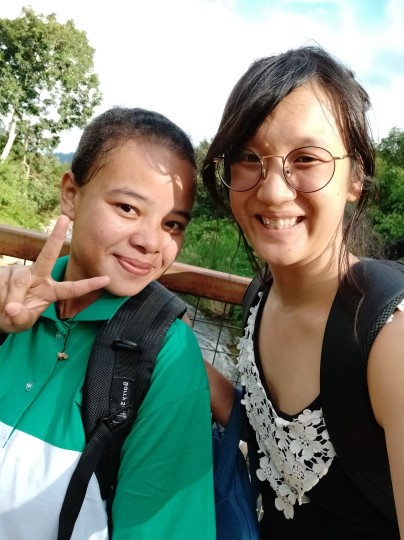
When we get ready to head back, I take a selfie with Rosminah, the first Orang Asli I spoke to, on the bridge over the clear rushing waters of Sungai Jelai. She asks for my phone number even though there’s no phone line in her village. I give it to her, hoping that the government will soon provide electricity and wireless access to Pos Lenjang.
I tell Rosminah not to give up on her dreams to be a doctor, though my words sound shallow – she must overcome so many obstacles that someone like me doesn’t ever face, institutional hurdles beyond one’s individual capability, drive and ambition.
But if those in power do their jobs and remove some of these barriers, then perhaps Rosminah can achieve her goals and help her people exercise their rights as Orang Asli.

Boo Su-Lyn is CodeBlue editor-in-chief. She is a libertarian, or classical liberal, who believes in minimal state intervention in the economy and socio-political issues.


